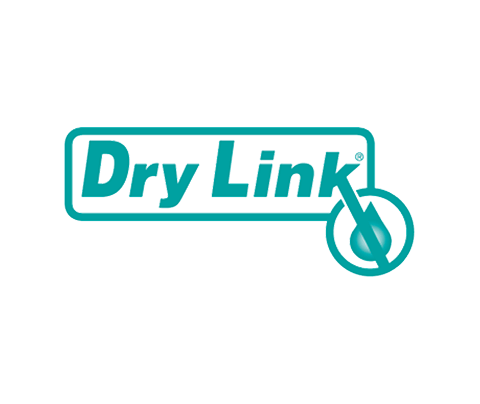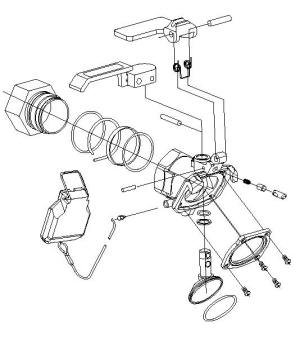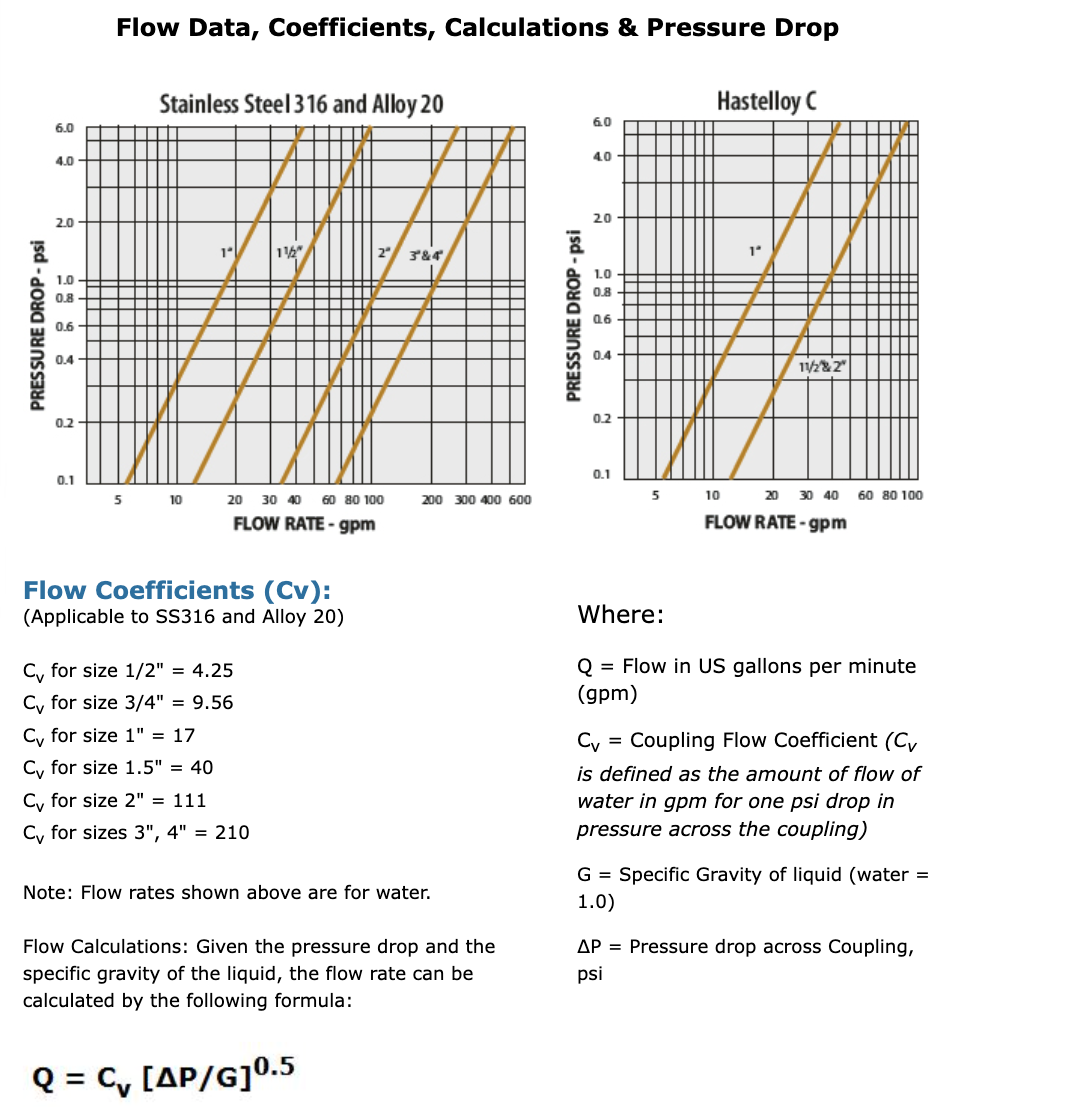Files
Maintenance Manual - 1 - 1 1/2" sizes
Maintenance Manual - 2", 3" & 4" sizes
Maintenance Manual - Hastelloy C Couplings
Dry Link Refurbish Program








Dry Link, Inc. is the premier manufacturer of dry-disconnect "dry break" hose couplings for bulk transfer of liquids, & high-containment split-butterfly valves for powders. Our industrial couplings are specified worldwide in chemical & petrochemical industries to provide drip-free connections. When hygienic conditions are required, our sanitary high-purity line of couplings are specified by all major pharmaceutical, biotechnology & food companies.
A mechanical interlock prevents accidental openings. Discs are closed & sealed before coupler and adapter can be separated. Ideal for hazardous, high viscosity, high-flow, and sanitary applications.
Core Applications
Maintenance Manual - 1 - 1 1/2" sizes
Maintenance Manual - 2", 3" & 4" sizes
Maintenance Manual - Hastelloy C Couplings
Dry Link Refurbish Program
A dry-disconnect coupling (also called dry-break coupling) is a hose connection device which provides an automatic mechanism to seal off both the hose and the fixed pipe end when the hose is disconnected.
Dry-disconnect couplings are used in any fluid transfer application where loss of fluid upon disconnection cannot be tolerated because of environmental regulations, worker safety considerations, the high value of the fluid, or where cleanliness is a concern.
The Dry Link brand hose coupling assembly was invented and patented by us to provide a new and improved alternative to the older designs of other dry disconnect devices. It uses a unique new technology which makes the plunger and spring devices of the last 20 years obsolete. We are a recipient of the 1993 Product of the Year, Gold award from Plant Engineering magazine.
Almost everything about Dry Link is unique. The flow shut-off mechanism resembles a butterfly valve which results in a very low flow restriction. This design enhances flow while also reducing the risk of internal gunk-ups which can lead to connection malfunctions. A foolproof safety interlock prevents accidental opening, and a clever high-tech sealing arrangement results in the world’s most drip-free dry disconnect.
Independent, third party testing by Factory Mutual Research has verified that the 2” (DN 50) size Dry Link hose coupling assembly had only 1 to 2 drops of total cumulative leakage after a total of 10 connect/disconnect cycles. No other product comes close!
Dry Link hose coupling assemblies can be used anywhere there is a hose being used to transfer fluid, especially where the fluids are hazardous, toxic, corrosive or flammable. This, of course, includes bulk fluid transfer applications such as loading and unloading of tank trucks, railroad cars and portable tank containers. It also includes in-plant switching manifolds and moving equipment such as portable batch reactor vessels.
Absolutely. In fact, the unique Dry Link design provides better worker access to the bottom connection on an IBC than most other dry disconnects.
The first Dry Link units were installed in September 1992, on a solvent switching manifold for a large midwest pharmaceutical company. This system is still working fine. Since then, several thousand Dry Link units have been put into service throughout the world.
All wetted parts are Type 316 stainless steel. Dry Link can also be constructed with Alloy 20(Carpenter 20), or Hastelloy C wetted parts for services where severe corrosives are a concern. All internal seals are spring-energized PTFE; however, molded Viton (FKM), EPDM or Chemraz/Kalrez (FFKM) seals can be provided.
Couplings are offered in sizes 1”, 1.5”, 2”, 3” and 4” (DN 25, 40, 50, 75, and 100).
We also offer custom ½" and ¾" sizes.
End connections: FNPT, British Standard (BSPP), Flanged, Butt-weld, and Triclover.
Coupling ratings vary with size and seal materials. Please refer to our Catalog or click here.
Dry Link “keyed” couplings are used in batch process plants and manifolds for preventing accidental cross-contamination of chemicals. Please see details in our Catalog or click here.
Absolutely. Typically, these sanitary couplings have Triclover end connections and are hand polished with an internal 20 RA micro-inch (0.50 RA micron) surface finish. We can even supply FDA or USP approved seals. Please see details in our Catalog or click here.
Yes. Please visit our “Applications” link on our website. We have tons of information on our website!
You can watch a video demo of our coupling.
Our website provides links to third party websites to check material compatibility for your line medium. However, Dry Link does not take responsibility for the accuracy of information contained on the third part websites. Please visit the “Applications” link on our website and click on “GUIDE”.
Our comprehensive website can answer most of your questions. You can download our Catalogand Maintenance Manuals. You can even download and watch videos on your PC illustrating operation and maintenance of couplings. If you have further questions, please contact us. Our friendly staff is always there to help you.
It is very important that you specify the correct coupling for your application. Please select the desired coupling features by clicking here.
Most Coupling operational problems can be solved by understanding the operation and maintenance of our couplings. We provide detailed instructions through Maintenance Manuals and Videos on our website. The solution may be simply specifying optimum Seal materials or implementing a maintenance plan. Please click to view the Troubleshooting Guide. This Guide is organized into eight Tables - please select the appropriate Table for your coupling. Our friendly staff is here to help you. Please review the following questions so that we can fully understand your problem. Remember, Coupler has a Flow Control Handle; Adapter does not have a Handle.
 Dry Link couplings can be easily repaired or refurbished using replacement parts that can be ordered through your distributor. Our maintenance manuals and videos offer in depth instructions for restoring couplings to fully functional condition. However, situations arise where you may want us to repair your couplings. We have set up an in house maintenance program where we can repair/refurbish your couplings. When you send us your couplings for refurbishment, we will do the following:
Dry Link couplings can be easily repaired or refurbished using replacement parts that can be ordered through your distributor. Our maintenance manuals and videos offer in depth instructions for restoring couplings to fully functional condition. However, situations arise where you may want us to repair your couplings. We have set up an in house maintenance program where we can repair/refurbish your couplings. When you send us your couplings for refurbishment, we will do the following:
The simple answer would be almost anywhere a hose is being used to transfer fluid, especially where no spills, drips or worker exposure can be tolerated.
Most applications can be grouped into three functional categories
Really almost any fluid in a hose can benefit from Dry Link especially fluids that are hazardous, toxic, corrosive, etc. We even have applications on petroleum products and fuels, which, historically, have used lower priced aluminum hose coupling devices.
A primary target, however, should be viscous fluids that set up and harden in air. This includes epoxy resins, paints, adhesives, sealants, shampoos, etc. All competitive dry break products have a high resistance to flow and result in problems when used with viscous fluids.
You would probably be surprised to learn the large number of different plants that have Dry Link installations. Most people would naturally think of truck loading at a chemical plant, but that is just scratching the surface.
Here are some typical Dry Link applications in a variety of industries:
You may literally be passing by Dry Link installation as you drive down the highway:
* The applications listed above represent "typical" applications. Each application is unique and our couplings may not be suitable for all applications. We strongly recommend that the customer first tryout a set of our couplings for their application before purchasing large quantities. Customer assumes full responsibility for the selection of our couplings and/or materials for their application. Please read our complete Terms&Conditions/Warranty information.
| Component | Size | Housing Material | Main Seal Material | End Connection | Special Requirements |
| Coupler (Style 250) |
½" (DN 15) ¾" (DN 20 1" (DN 25) 1 ½" (DN40) 2" (DN 50) 3" (DN 80) 4" (DN 100) |
SS 316 Alloy 20 Hastelloy C |
Fluoroelastomer (FKM, Viton®) EPDM PTFE Perfluoroelastomer (FFKM) |
NPT (female) BSPP (female) Flanged ANSI Class 150 Triclover |
Sanitary with 20 RA polished internals FDA or USP approved seals Keyed couplings Certification documentation |
| Adaptor (Style 260) |
½" (DN 15) ¾" (DN 20) 1" (DN 25) 1 ½" (DN40) 2" (DN 50) 3" (DN 80) 4" (DN 100) |
SS 316 Alloy 20 Hastelloy C |
Fluoroelastomer (FKM, Viton®) EPDM PTFE Perfluoroelastomer (FFKM) |
NPT (female) BSPP (female) Flanged ANSI Class 150 Triclover |
Sanitary with 20 RA polished internals FDA or USP approved seals Keyed couplings Certification documentation |
| Repair Parts | Please refer to maintenance manuals for ordering parts. | ||||


| Nominal Size | Stainless 316 and Alloy 20 | Hastelloy C |
|---|---|---|
| ½" (DN 15), ¾" (DN 20) & 1" (DN 25)" | 210 psi (14.3 bar) | 210 psi (14.3 bar) |
| 1 ½" (DN 40) | 210 psi (14.3 bar) | 210 psi (14.3 bar) |
| 2" (DN 50) | 150 psi (14.3 bar) | 210 psi (14.3 bar) |
| 3" & 4" (DN 80 & DN 100) | 120 psi (8.3 bar) | 210 psi (14.3 bar) |
For one-time field test only, the maximum joint working pressure may be increased to 1 1/2 times the figures shown.
Maximum 200 ft-lb. (271 n•m) at the swivel
Tested to 20° (711 mm) Hg vacuum in all positions without leakage
| Fluroelastomer (Viton®) or EPDM seals | -20° to +230°F (-29° to +110°C) |
| PTFE seals | +20°F to +230°F (-7 to +110°C) |
Contact Control Devices for higher or lower temperature requirements
| Standard | All 316 stainless steel ASTM A351, Grade CF8M |
| Optional | Alloy 20 ASTM A351, Grade CN7M |
| Optional | Hastelloy C ASTM A494, Grade CW2M |
*Disc is electroless nickel plated to reduce galling.
| Fluoroelastomer (FKM, Viton®) |
Typically used for oxidizing acids, petroleum oils, halogenated hydrocarbons, lubricants, hydraulic fluids, or organic liquids. |
| EPDM | Typically used with dilute acids, ketones, or alcohol. |
| PTFE | Typically used with most chemicals and solvents. |
| Perfluoroelastomer (FFKM/Chemraz®Kalrez®/Perlast®/Simrez®) |
Typically used for higher temperatures and for fluids that have suspended grit. |
For special applications and optional materials, please contact Control Devices.

| 3/4", 1/2", 1" Adapter Half | 1.5" Adapter Half | 2" Adapter Half | 3" Adapter Half | 4" Adapter Half |
| 3/4", 1/2", 1" Coupler Half | 1.5" Coupler Half | 2" Coupler Half | 3" Coupler Half | 4" Coupler Half |
| 3/4", 1/2", 1" Adapter Half | 1.5" Adapter Half | 2" Adapter Half |
| 3/4", 1/2", 1" Coupler Half | 1.5" Coupler Half | 2" Coupler Half |